4권 1호

초록
In this study, we aimed to quantify the population size and spatial distribution of three predatory Scarites species in coastal sand dunes. In June and August 2014, 252 pitfall traps were utilized to conduct a trapping web analysis at three distinct sites with varying vegetation dominance values. Scarites sulcatus had the largest estimated population in a 10 m2 area with a habitat density of 36.6 in a Vitex rotundifolia community area (site B) in the June survey. In contrast, Scarites aterrimus had the largest population size with a habitat density of 2.9 in a Calystegia soldanella community area (site A) in the August survey. Spatial distribution analysis revealed that S. sulcatus dominated the Vitex rotundifolia community without preference for a particular site, whereas S. aterrimus and Scarites terricola pacificus were primarily observed on the beach. The results indicated that the three Scarites species in the Sohwang coastal sand dune region exhibited differences in their spatial and temporal distributions in the coastal dune ecosystem in order to avoid competition and predation. In conclusion, our findings can be utilized to estimate the population density of the genus Scarites on the Korean Peninsula. The outcomes of this study will contribute to estimating insect population densities on the Korean Peninsula and developing investigative assessment methodologies.
Abstract
In this study, we aimed to quantify the population size and spatial distribution of three predatory Scarites species in coastal sand dunes. In June and August 2014, 252 pitfall traps were utilized to conduct a trapping web analysis at three distinct sites with varying vegetation dominance values. Scarites sulcatus had the largest estimated population in a 10 m2 area with a habitat density of 36.6 in a Vitex rotundifolia community area (site B) in the June survey. In contrast, Scarites aterrimus had the largest population size with a habitat density of 2.9 in a Calystegia soldanella community area (site A) in the August survey. Spatial distribution analysis revealed that S. sulcatus dominated the Vitex rotundifolia community without preference for a particular site, whereas S. aterrimus and Scarites terricola pacificus were primarily observed on the beach. The results indicated that the three Scarites species in the Sohwang coastal sand dune region exhibited differences in their spatial and temporal distributions in the coastal dune ecosystem in order to avoid competition and predation. In conclusion, our findings can be utilized to estimate the population density of the genus Scarites on the Korean Peninsula. The outcomes of this study will contribute to estimating insect population densities on the Korean Peninsula and developing investigative assessment methodologies.



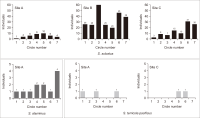
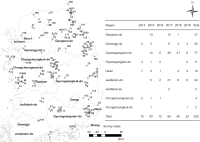
초록
We analyzed data of endangered mammals in the 1st grade zone of the Ecological and Natural Map of Korea that were obtained through 202 field surveys over six years. Five endangered mammal species were identified including otters, long-tailed gorals, martens, leopard cats, and flying squirrels. The total number of habitat traces collected was 918, of which 897 traces (97.7%) were excrement types. The total surveyed distance was 697.7 km and there were 2,184 grids of 250×250 m each. Of these grids, 441 or 20.2% were confirmed as habitats of endangered mammals. Moreover, we analyzed results of repeated surveys in the same area by converting them into individual one-time surveys, accounting for 23.1% of the total area. The flying squirrel showed a low correlation with the frequency of field surveys but showed many habitats in a specific season. Leopard cats and martens were correlated with the frequency of field surveys. Results of analysis confirm that the grid method used for establishing the Ecological and Natural Map is unsuitable for the habitat division of flying squirrels, otters, leopard cats, and martens, and it does not reflect the actual habitats of these four species. Therefore, we propose that the concept of the habitat grid of species must be reevaluated and improved, specifically for endangered mammals.
Abstract
We analyzed data of endangered mammals in the 1st grade zone of the Ecological and Natural Map of Korea that were obtained through 202 field surveys over six years. Five endangered mammal species were identified including otters, long-tailed gorals, martens, leopard cats, and flying squirrels. The total number of habitat traces collected was 918, of which 897 traces (97.7%) were excrement types. The total surveyed distance was 697.7 km and there were 2,184 grids of 250×250 m each. Of these grids, 441 or 20.2% were confirmed as habitats of endangered mammals. Moreover, we analyzed results of repeated surveys in the same area by converting them into individual one-time surveys, accounting for 23.1% of the total area. The flying squirrel showed a low correlation with the frequency of field surveys but showed many habitats in a specific season. Leopard cats and martens were correlated with the frequency of field surveys. Results of analysis confirm that the grid method used for establishing the Ecological and Natural Map is unsuitable for the habitat division of flying squirrels, otters, leopard cats, and martens, and it does not reflect the actual habitats of these four species. Therefore, we propose that the concept of the habitat grid of species must be reevaluated and improved, specifically for endangered mammals.


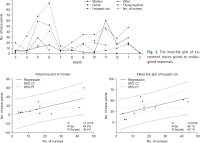
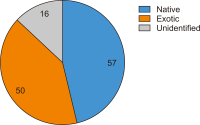
초록
Primary succession on bare rocks is a challenge for invaders, including one of which was plants. The invasion of bare rock by exotic species raises the question of whether their presence hinders or facilitates succession. This study aimed to determine the role of exotic species in primary succession in six overburden (OB) coal mines using a chronosequence approach. Vegetation analysis was undertaken using line transects. Measurements were carried out on the absolute and relative coverage of each species. Native and exotic species were identified and grouped using information from local communities, identification books, and websites. The relationship between time and number of species, time, and relative dominance of exotic and native species was analyzed using Pearson’s correlation. Species number and dominance data were analyzed descriptively. The number of native species from the six OB heaps was higher (57) than that from exotic heaps (50). Neither the number of species nor the coverage showed a significant relationship with time. Exotic species predominated throughout the age of the embankment but tended to decrease over time. Temporary dominance by exotic species plays a role in assisting primary succession in the OB. This process might be prolonged without the temporary dominance of exotic species during early primary succession.
Abstract
Primary succession on bare rocks is a challenge for invaders, including one of which was plants. The invasion of bare rock by exotic species raises the question of whether their presence hinders or facilitates succession. This study aimed to determine the role of exotic species in primary succession in six overburden (OB) coal mines using a chronosequence approach. Vegetation analysis was undertaken using line transects. Measurements were carried out on the absolute and relative coverage of each species. Native and exotic species were identified and grouped using information from local communities, identification books, and websites. The relationship between time and number of species, time, and relative dominance of exotic and native species was analyzed using Pearson’s correlation. Species number and dominance data were analyzed descriptively. The number of native species from the six OB heaps was higher (57) than that from exotic heaps (50). Neither the number of species nor the coverage showed a significant relationship with time. Exotic species predominated throughout the age of the embankment but tended to decrease over time. Temporary dominance by exotic species plays a role in assisting primary succession in the OB. This process might be prolonged without the temporary dominance of exotic species during early primary succession.


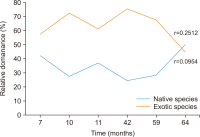

초록
Seed dispersal supports community structure, maintains genetic connectivity across fragmented landscapes, and influences vegetation assemblages. In the Philippines, only two seed dispersal studies have compared different dispersal agents. We examined the seed dispersal patterns of water, wind, birds, and bats in the Caliraya Watershed, Philippines. We aimed to determine the floral species that were dispersed and how the forest characteristics influenced seed dispersal. By running seed rain traps and drift litter collection from March to June 2022, we analyzed 14,090 seeds in a privately owned study site within the watershed. Water did not exclusively disperse any species and acted as a secondary disperser. Seed density (seeds/trap) was significantly higher for bird-dispersed (n=166) and bat-dispersed (n=145) seeds than for wind-dispersed (n=79) seeds (One-way analysis of variance [ANOVA]: F2,87=16.21, P<0.0001). Species number (species/trap) was significantly higher for bird-dispersed (n=3.7) and bat-dispersed (n=3.9) seeds than for wind-dispersed (n=0.2) seeds (One-way ANOVA: F2,87=16.67, P<0.0001). Birds dispersed more species because they are more diverse and access a wider variety of fruits, unlike bats. Birds and bats target different fruits and provide separate seed dispersal services. Generalized linear model analyses revealed that the number and basal area of fleshy fruit trees most strongly influenced the bird seed dispersal patterns. Therefore, we recommend a three-way approach to restoration efforts in the Caliraya Watershed: (1) ensure the presence of fleshy fruit trees in restoration zones, (2) assist the establishment of mid-successional and wind-dispersed trees, and (3) intensify the conservation efforts for both flora and faunal diversity.
Abstract
Seed dispersal supports community structure, maintains genetic connectivity across fragmented landscapes, and influences vegetation assemblages. In the Philippines, only two seed dispersal studies have compared different dispersal agents. We examined the seed dispersal patterns of water, wind, birds, and bats in the Caliraya Watershed, Philippines. We aimed to determine the floral species that were dispersed and how the forest characteristics influenced seed dispersal. By running seed rain traps and drift litter collection from March to June 2022, we analyzed 14,090 seeds in a privately owned study site within the watershed. Water did not exclusively disperse any species and acted as a secondary disperser. Seed density (seeds/trap) was significantly higher for bird-dispersed (n=166) and bat-dispersed (n=145) seeds than for wind-dispersed (n=79) seeds (One-way analysis of variance [ANOVA]: F2,87=16.21, P<0.0001). Species number (species/trap) was significantly higher for bird-dispersed (n=3.7) and bat-dispersed (n=3.9) seeds than for wind-dispersed (n=0.2) seeds (One-way ANOVA: F2,87=16.67, P<0.0001). Birds dispersed more species because they are more diverse and access a wider variety of fruits, unlike bats. Birds and bats target different fruits and provide separate seed dispersal services. Generalized linear model analyses revealed that the number and basal area of fleshy fruit trees most strongly influenced the bird seed dispersal patterns. Therefore, we recommend a three-way approach to restoration efforts in the Caliraya Watershed: (1) ensure the presence of fleshy fruit trees in restoration zones, (2) assist the establishment of mid-successional and wind-dispersed trees, and (3) intensify the conservation efforts for both flora and faunal diversity.


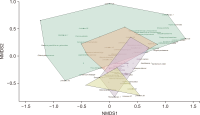






초록
This study analyzed research trends in the field of ecological research. Data were collected based on a keyword search of the SCI, SSCI, and A&HCI databases from January 2002 to September 2022. The seven keywords, including biodiversity, ecology, ecotourism, species, climate change, ecosystem, restoration, wildlife, were recommended by ecological research experts. Word clouds were created for each of the searched keywords, and topic map analysis was performed. Topic map analysis using biodiversity, climate change, ecology, ecosystem, and restoration each generated 10 topics; topic maps analysis using the ecotourism keyword generated 5 topics; and topic map analysis using the wildlife keyword generated 4 topics. Each topic contained six keywords.
Abstract
This study analyzed research trends in the field of ecological research. Data were collected based on a keyword search of the SCI, SSCI, and A&HCI databases from January 2002 to September 2022. The seven keywords, including biodiversity, ecology, ecotourism, species, climate change, ecosystem, restoration, wildlife, were recommended by ecological research experts. Word clouds were created for each of the searched keywords, and topic map analysis was performed. Topic map analysis using biodiversity, climate change, ecology, ecosystem, and restoration each generated 10 topics; topic maps analysis using the ecotourism keyword generated 5 topics; and topic map analysis using the wildlife keyword generated 4 topics. Each topic contained six keywords.

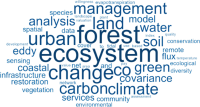

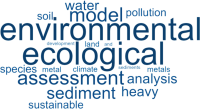


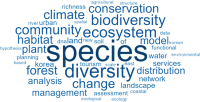
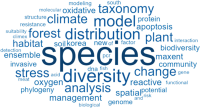

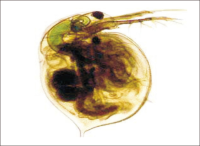
초록
Phthalates are animal carcinogens. Potassium hydrogen phthalate (KHP), which has the least complicated structure among phthalates, is used for the analysis of total organic carbon and formaldehyde. However, its toxicity has not been confirmed. A 24-hour acute toxicity test was performed using Daphnia magna, a water flea used to evaluate aquatic toxicity owing to its high sensitivity. The lowest observed effect concentration of KHP was found to be 240 mg/L. The effects of phosphorus, nitrogen, and Cr(6+), which are able to be discharged along with KHP, were also confirmed using tests. At 240 mg/L KHP, toxicity increased as phosphorus, nitrogen, and Cr(6+) increased. In addition, tests were performed to confirm the half maximal effective concentration of KHP. Through 10 test repetitions, the average ecotoxicity value was found to be 0.3, the average half maximal effective concentration was 327.75 mg/L, and the coefficient of variation (%) was 3.16%; because the latter value is lower than 25%, which is what is generally suggested for the water pollution standard method, the reproducibility of the tests is sufficient to replace the existing standard reference toxicity test that uses potassium dichromate. In addition, the half maximum effective concentration of potassium hydrogen phthalate is approximately 218 times more than that of potassium dichromate; therefore, toxicity is relatively low. In conclusion, KHP is a feasible alternative to the highly toxic potassium dichromate for performing the standard reference toxicity test.
Abstract
Phthalates are animal carcinogens. Potassium hydrogen phthalate (KHP), which has the least complicated structure among phthalates, is used for the analysis of total organic carbon and formaldehyde. However, its toxicity has not been confirmed. A 24-hour acute toxicity test was performed using Daphnia magna, a water flea used to evaluate aquatic toxicity owing to its high sensitivity. The lowest observed effect concentration of KHP was found to be 240 mg/L. The effects of phosphorus, nitrogen, and Cr(6+), which are able to be discharged along with KHP, were also confirmed using tests. At 240 mg/L KHP, toxicity increased as phosphorus, nitrogen, and Cr(6+) increased. In addition, tests were performed to confirm the half maximal effective concentration of KHP. Through 10 test repetitions, the average ecotoxicity value was found to be 0.3, the average half maximal effective concentration was 327.75 mg/L, and the coefficient of variation (%) was 3.16%; because the latter value is lower than 25%, which is what is generally suggested for the water pollution standard method, the reproducibility of the tests is sufficient to replace the existing standard reference toxicity test that uses potassium dichromate. In addition, the half maximum effective concentration of potassium hydrogen phthalate is approximately 218 times more than that of potassium dichromate; therefore, toxicity is relatively low. In conclusion, KHP is a feasible alternative to the highly toxic potassium dichromate for performing the standard reference toxicity test.



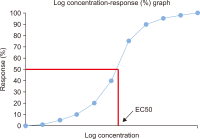
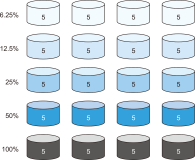

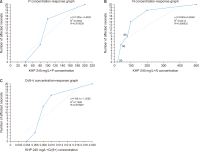

_학술지_디자인_시안_koar_top_300x55.png)
